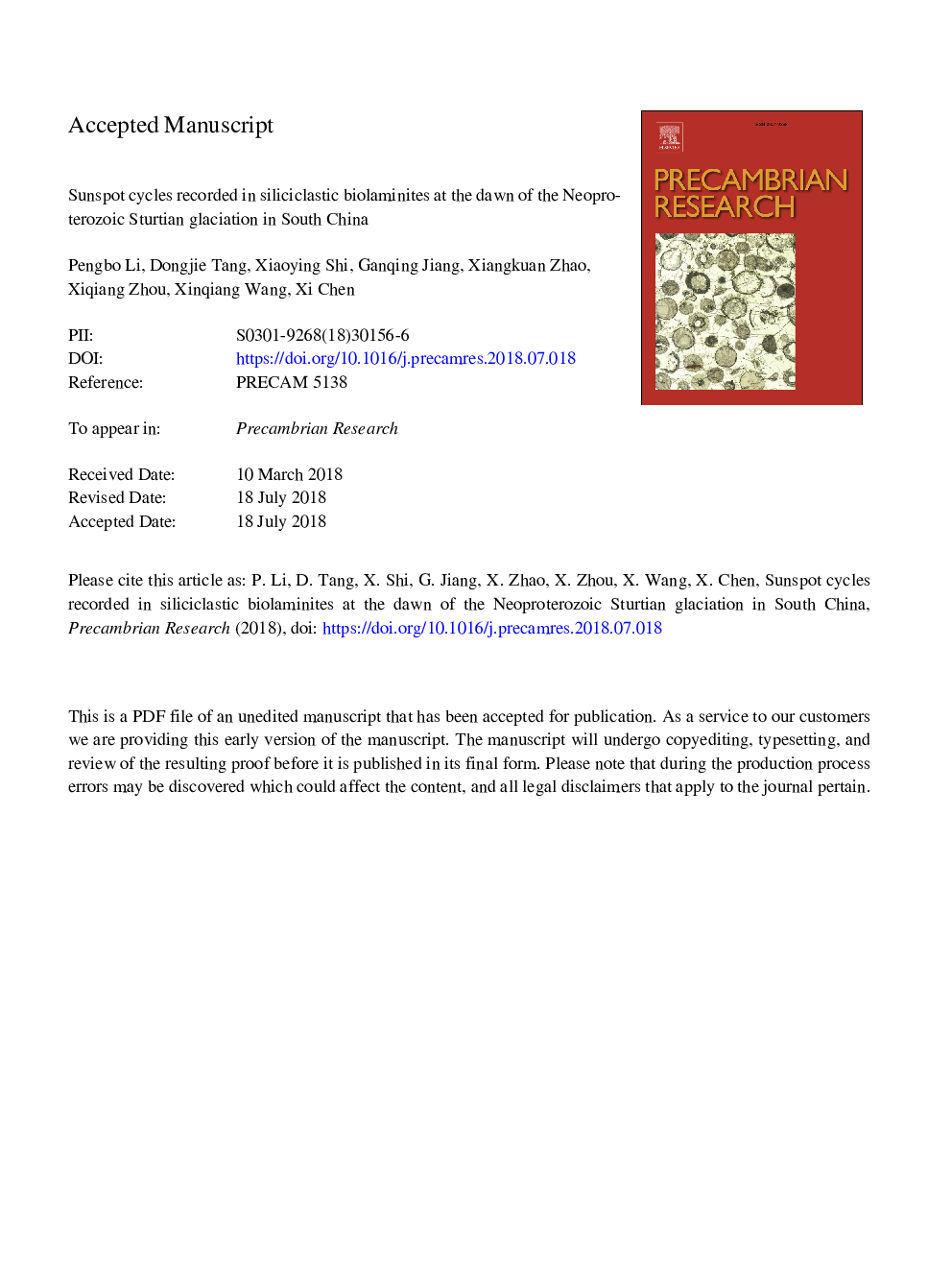| Article ID | Journal | Published Year | Pages | File Type |
|---|---|---|---|---|
| 8912472 | Precambrian Research | 2018 | 56 Pages |
Abstract
Well-preserved siliciclastic biolaminites from the Neoproterozoic Wuqiangxi Formation (ca. 810-715â¯Ma) in South China show submillimeter-scaled couplets that consist of alternating dark and light laminae. The laminar couplets have been interpreted of annual origin, and the dark and light laminae mainly record warm spring to summer and cold autumn to winter deposition, respectively. Power spectrum and evolutionary fast Fourier transform (FFT) analyses of the laminar couplet thickness variations and geochemical series (Al, Th, Ba/Ti, Cu/Ti, Zn/Ti, V/Ti and U/Ti) revealed prominent periodicity of 10.0-11.4â¯yr and 18.9-25.6â¯yr. These two coherent periodic modes match well with the 11-yr Schwabe sunspot cycle and 22-yr solar Hale cycle, respectively. The observed layering pattern is thus interpreted as recording solar induced climate changes that may have modulated sedimentation, microbial growth and biomass production in shallow marine environments between fair-weather and storm-wave bases. Preservation of the sunspot cycles may have been facilitated by quiet depositional environment, microbial mat protection, and early diagenetic silicification. The documented Neoproterozoic cyclicity, in combination with previously reported examples, implies the stability of sunspot periodicity since the Paleoproterozoic. The presence of stable sunspot cycles in the upper Wuqiangxi Formation also suggests that the solar activity did not change significantly at the dawn of the Sturtian glaciation.
Related Topics
Physical Sciences and Engineering
Earth and Planetary Sciences
Geochemistry and Petrology
Authors
Pengbo Li, Dongjie Tang, Xiaoying Shi, Ganqing Jiang, Xiangkuan Zhao, Xiqiang Zhou, Xinqiang Wang, Xi Chen,
